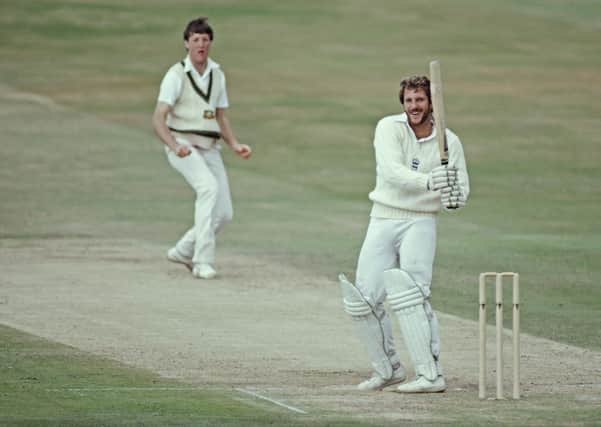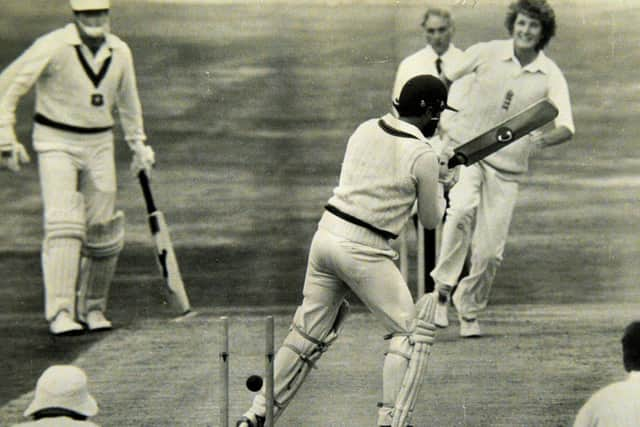Two Headingley ‘miracles’ but did the sequel match original?


The Godfather Part II, for example, or The Empire Strikes Back.
Other times, though, the opposite is true – Crocodile Dundee in Los Angeles, for instance, famously dismissed by American film critic Roger Ebert with the words: “I’ve seen audits that were more thrilling.”
Advertisement
Hide AdAdvertisement
Hide AdNo-one would deny the “thrilling” aspect of what is colloquially termed ‘The Miracle of Headingley 2019’, when Ben Stokes and his bespectacled sidekick, Jack Leach, socked it to the Aussies.


They added 76 for the game’s last wicket – or rather Stokes added 74 and Leach sneaked a single, with the other run a wide – to pinch the Test match amid scenes rendered all the more poignant by the subsequent pandemic.
On that far-off Sunday of fond reminiscence, Headingley was the site of social distancing in reverse – before we even knew what that term meant – as stranger embraced stranger in the late-August sunshine.
Many left the ground that day saying that they had never seen anything like it and never would again.
Advertisement
Hide AdAdvertisement
Hide AdOthers protested that they had seen it all before and that what they saw was even more thrilling.


For 40 years ago this week, with Thatcher’s Britain bedevilled by riots, and Charles and Diana about to get to wed, Ian Botham and Bob Willis contrived the ‘The Miracle of Headingley ‘81’, when England beat Australia after following-on.
That was the first miracle – the original that made the sequel possible, and which had the all-important advantage of getting in first.
But did those who were there – enough to fill the entire suburb of Headingley, let alone the ground, if all claims to be present are correct – indeed see something more thrilling, or do they simply fall into the time-honoured trap of thinking that what they saw was better and could never be bettered?
Advertisement
Hide AdAdvertisement
Hide AdIt matters little really – both miracles turned sporting water into wine, after all – but it is interesting to ponder as we mark this latest milestone anniversary of Headingley ’81 and the first to have had a challenger to the first miracle.
Raking over that 1981 match in detail, of course, has been done to death to the point of tedium.
Every protagonist has had their say – numerous times.
Entire books have been written on the subject.
Attempts to shine fresh light on the matter are as futile as trying to turn back the hands of time.
One might just as well have gone up to an ageing Neil Armstrong, for example, and asked him, with cringe-making predictably, what it was like to have been the first man to walk on the moon as to go up to an ageing Botham now and ask him what he remembers of the historic events of 40 years ago.
Advertisement
Hide AdAdvertisement
Hide AdAnd yet he and his colleagues are routinely wheeled out – albeit still happily in a metaphorical sense – to get that rake out one more time to go over ground that has been positively ploughed to death.
If you can bear it, the basic facts were these...
England, 1-0 down after two Tests, arrived for the third at Headingley in some disarray.
Botham had resigned the captaincy after his 12 Tests in charge had brought four defeats and eight draws, equalling England’s then longest sequence without a win.
He had been shunned by the MCC members – such a nice bunch – in the previous Test at Lord’s, who greeted him with stony-faced silence when he returned to the pavilion after completing a pair.
England sent for Mike Brearley to replace him as captain.
Advertisement
Hide AdAdvertisement
Hide AdBotham had gone reverse Oscar Wilde – from being in the stars to looking down at the gutter.
The match at Headingley did not start well.
Brearley lost the toss and Australia racked up 401-9 declared, Botham at least rediscovering his mojo with 6-95.
In reply, England were bundled out for 174, Botham top-scoring with 50, and asked to follow-on.
They lost Graham Gooch to reach 6-1 at stumps on day three, the Headingley scoreboard having flashed up Ladbrokes’ odds on the result: 1-4 Australia; 5-2 draw; 500-1 England.
Advertisement
Hide AdAdvertisement
Hide AdAfter the rest day, England slumped to 135-7 on day four, 92 behind. Botham was joined by Graham Dilley – and the rest is history.
They flogged the ball to all parts – Botham even launching it into the confectionary stall and out again – and England were 25 ahead when Dilley was dismissed for 56.
Chris Old took up the baton in front of his own crowd, contributing 29 to a stand of 67, and Botham and Willis added 32 for the final wicket in the lead up to stumps, and a further five runs on the fifth morning.
England were all out for 356 – Botham 149 not out from 148 balls with 27 fours and a six – and Australia were left to score 130 for victory.
Advertisement
Hide AdAdvertisement
Hide AdThey were 56-1 when Willis – steaming down the hill from the Kirkstall Lane end – completed the miracle with figures of 8-43 as Australia were routed for 111.
England won by 18 runs to achieve just the second instance of a team winning a Test after following-on (the other was England’s 10-run triumph at Sydney in 1894).
In sport, as in life, context is important.
Part of the reason why the 2005 Ashes possesses such resonance is because of the backstory, England having suffered years of humiliation at the hands of the Aussies.
Ditto Headingley ’81 in that it not only transformed the tone of that series, England going on to win 3-1, but it lifted the mood of a nation down on its knees and delivered, through Botham’s innings, the sort of big-hitting in Tests that was then rarely seen.
Advertisement
Hide AdAdvertisement
Hide AdIndeed, the utter hopelessness of the position before Botham and Willis intervened, the fact that sides so rarely prevail after following-on, let alone overturn odds of 500-1, made this such a remarkable event.
Headingley 2019? For some it was in the next bracket down; for others, it stands on a summit of its own, or was at least its equal.
Certainly, Stokes evoked the spirit of Botham by scoring 135 not out from 219 balls with 11 fours and eight sixes in a masterful display.
Few gave England a prayer chasing 359 to win – and not even half a prayer when they slipped to 286-9.
Advertisement
Hide AdAdvertisement
Hide AdNowadays, Test matches are less of an event than they were 40 years ago, ie, they are now much more frequent, and big-hitting is commonplace to the point that one hardly bats an eyelid if somebody hits six sixes in an over in a T20 match.
The Headingley sequel was good – ruddy good – but was it quite so good as the ’81 original?
Doubtless the debate will rage as the anniversaries tick by.
Comment Guidelines
National World encourages reader discussion on our stories. User feedback, insights and back-and-forth exchanges add a rich layer of context to reporting. Please review our Community Guidelines before commenting.